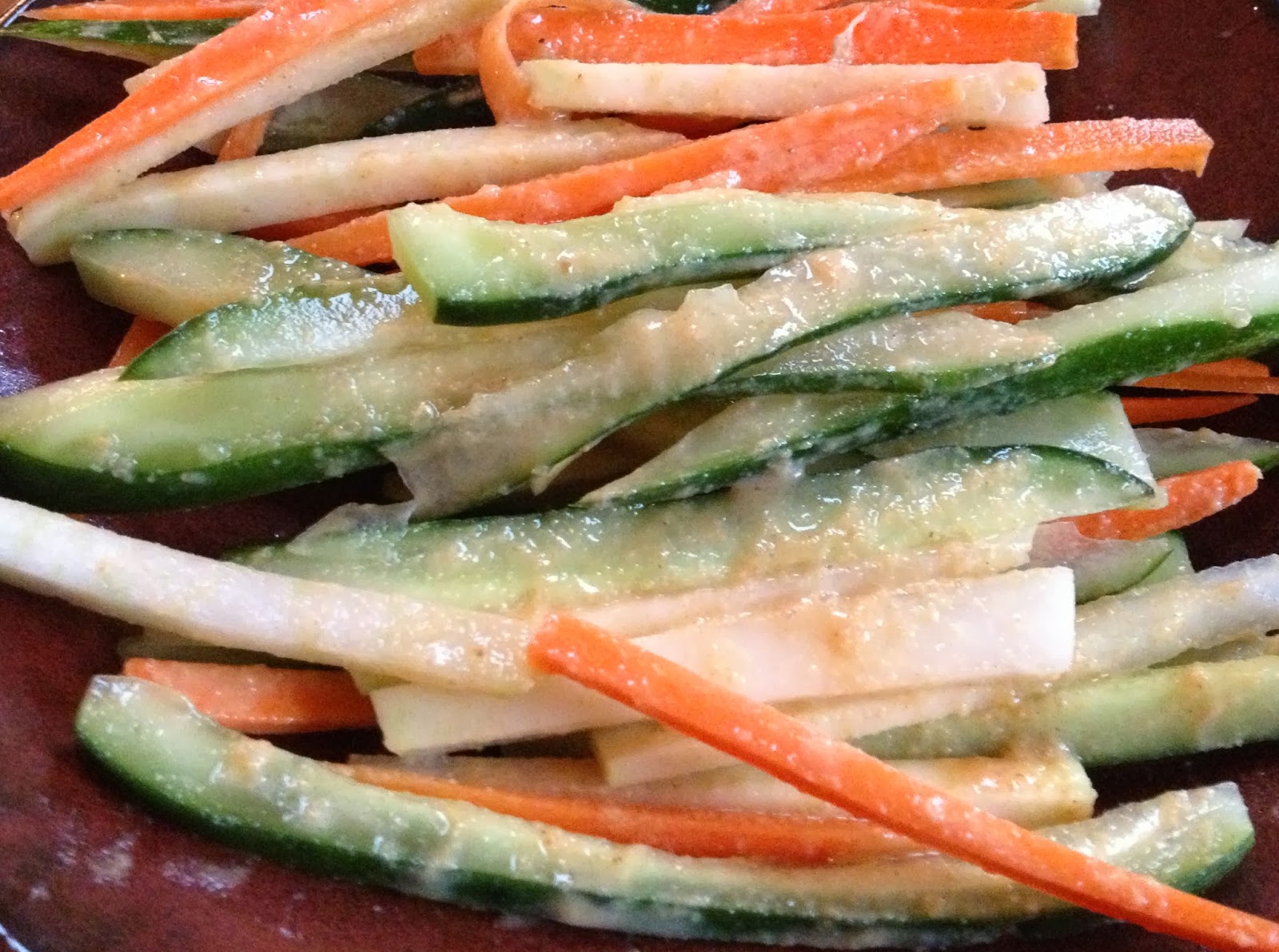The real deal
Last week my friend Mr. Potter commented:
[A] Scottish Gaelic instructor introduced me to a CD of "The North Shore
Gaelic Singers", elderly Canadians of Scottish ancestry who were native
speakers of Gaelic, singing Waulking Songs. He said that there's a
general feeling among Gaelic Waulking song enthusiasts that they must be
sung by old people to sound authentic, which he said is absurd: these
songs were formerly sung by people of all ages; it just happens that now
Scottish Gaelic has almost died out in maritime Canada.
So I guess if you only ever had experience with behemoth kohlrabis and then you tasted a young one, you might think it wasn't the real deal.
So I guess if you only ever had experience with behemoth kohlrabis and then you tasted a young one, you might think it wasn't the real deal.
To
waulk is to full tweed by hand, bunching and beating it to a rhythm set by a waulking song. When I
learned about waulking, in the rather unreal setting of a
graduate-school Scottish Gaelic class, I learned a particular pattern of
thumping tweed against a table twice, then passing the section I'd
worked on to the right, to the student seated next to me. We sang while doing the emperor's-new-clothes version of waulking; we didn't
have any tweed to full, but we banged out the rhythm with imaginary
cloth in our fists.
Was that an authentic waulking experience? Depends on what counts as real, I'd say, but, based on it, I didn't recognize this song as a waulking song. It has a contemporary base line instead of the sounds of tweed being waulked. After reading the liner notes, though, I could hear how the thump-thump-pass rhythm I learned fits into the song, even into this version. And when I described this version of the song to Mr. Potter a few days ago--I hadn't listened to it in a while and was trying to remember its name--he identified it by the base line. Whether any of that makes it "real," or not, I don't know.*
Was that an authentic waulking experience? Depends on what counts as real, I'd say, but, based on it, I didn't recognize this song as a waulking song. It has a contemporary base line instead of the sounds of tweed being waulked. After reading the liner notes, though, I could hear how the thump-thump-pass rhythm I learned fits into the song, even into this version. And when I described this version of the song to Mr. Potter a few days ago--I hadn't listened to it in a while and was trying to remember its name--he identified it by the base line. Whether any of that makes it "real," or not, I don't know.*
It's possible--really possible--to back oneself into
an intellectual corner over questions of authenticity. In America, "real" brie cheese
is imported from France. It's mild, rich, creamy,
buttery, and not at all like the brie cheese eaten in France.
French brie--I mean brie found in France, not brie found in America
that's been imported from France--is medium-brown colored and decidedly
stinky. As this slate.com article explains, the difference comes from US government
regulations that curtail imported brie's ripening process. You just can't
get the real real brie in America. But not to worry: you can get some
other kinds of real brie in this country, cheeses with a more
authentic (but not really authentic) flavor. Okay, so, if you've only
eaten brie in America, which is the real version, the one you experience
in real life, or the "real" French one, or the
in-between ones?
Sometimes the real thing is the one we knew first. Sometimes, something changes our mind about what's really real, as eating brie in France changed mine. And then, sometimes, something else changes our mind all over again, as reading more about brie in America did mine (again). Sometimes, it's probably a good idea to just enjoy different versions of things as they come along, although I can't help thinking that I enjoy each version more if I understand the history behind--and relationships between--all the versions. What do you think?
Sometimes the real thing is the one we knew first. Sometimes, something changes our mind about what's really real, as eating brie in France changed mine. And then, sometimes, something else changes our mind all over again, as reading more about brie in America did mine (again). Sometimes, it's probably a good idea to just enjoy different versions of things as they come along, although I can't help thinking that I enjoy each version more if I understand the history behind--and relationships between--all the versions. What do you think?
Image: http://blogs.etruth.com/takefivewithhaley/2013/04/12/v-top-five-favorite-cheeses/
*The Scottish Gaelic lyrics are in the comments to this video. (Scroll down.)






























